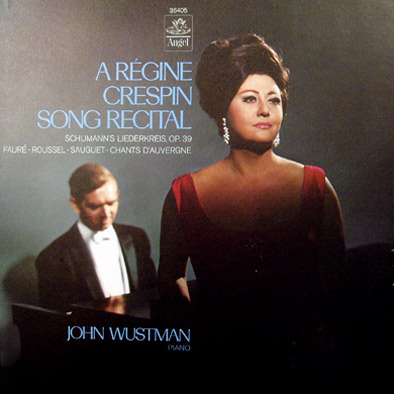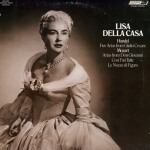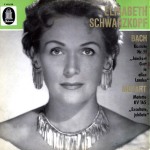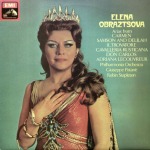Archive for the ‘camp’ Tag
The Cultural Phenom of the National “Diva”
Thanks (again) to Vinyl Divas, I discovered the singer “Gohar Gasparyan.” I youtubed her, simply because her name was so eccentric, and her mug not exactly the prettiest. I immediately smelled a camp classic discovery. Well, I was both wrong, and right. Turns out, she was very lovingly considered “The Armenian Nightingale.” It struck me that each country or culture seems to have their diva…the one considered to be the greatest, and to inspire and somehow embody the spirit of the nation.
Here’s a look at some of the biggies. Some of these names immediately came to mind, but a few took a little more digging. Some are genuine classics, and a couple (ie: Gohar and Yma) have one foot firmly (if unintentionally) in camp. One of the qualifications of a true diva is a title, nickname, or single name (ala Cher), as most all of them prove. Pathos is a requirement, and often a tragic life and/or death the deal maker for that highest rung of fame in posterity. In some cases, an operatic diva reaches this highest level of mainstream public adoration, but only in those cases did I include them here. Of course, the diva phenom and the gay sensibility are inextricably linked, and although that is surely part of my own inspiration, it is not the focus here.
Armenia
Gohar Gasparyan (’24 – ’07): “The Armenian Nightingale”
“In ’48, she migrated to Soviet Armenia, along with hundreds of thousands of other Armenians from the Middle East.” Upon her death, she was billed “The greatest master of the Armenian Opera Theater, the People’s Artist of the USSR, the hero of the Social Labor, the National Artist of Armenia, the Mesrop Mashtots order-bearer, and the professor of the Yerevan State Konservatory after Komitas.” In her prime, she displayed beautiful control and range:
This video of “O beau pays“ from Meyerbeer’s Les Huguenots shows she had the chops, but no technical or interpretive greatness in western opera to qualify her as a true operatic legend outside of Armenian rep. She delivers priceless camp at 7:05, with a shameless peekaboo that will have you rolling! As with all true divas, she was still worshipped in her later years, when her voice and body were in decline, because her heart and expressivity were at their most potent (the accidental whistle on her “sh” consonants is precious).
Introducing: “Vinyl Divas”
I just discovered the most potent porn for any opera, LP, or LP cover design lover or fanatic: Vinyl Divas! If you’ve never had the pleasure of visiting the site, sprint there now. It’s a true well of greatness, an opiate for opera queens. For long-time aficionados, it will take you WAY back…for newbies, it will introduce you to some of THE golden and notorious recordings and singers.
I had so much fun perusing V.D. that I’ve gathered up my favorite covers out of the lot (this isn’t about the recordings themselves), and compiled them for you here. BUT, be sure to visit the site, as this is just the tip of the immense iceberg, and my aim is to honor and spread V.D.! I’ve categorized the covers here differently from the original site. (Click on the thumbnails to view them larger.)
The Paragon
Flawless styling, lighting, composition, depth of field, and Régine in her prime: slam dunk!
Worship at the Altar of Diva
These put us in a sort of trance, through the beauty, allure and irrestistability of the diva. Never have Elisabeth, Edita, or Elena looked more “like buttah.” Leontyne’s art song LP was recorded when she was a young Julliard graduate.
A Delicious Morsel of Camp Art: “Carmen on Ice”
As I pine for the Vancouver Games, a recent date with youtube.com nudged a series of oh-so-relevant videos into my gaydar (think two Olympic “Battles”), like a gift from Baby Jesus. So, take a seat at jcm’s table, as I dish up some classic camp, with a generous side of masterful interpretive skating…dare I say “Art”?
But, for a moment, I digress. The opera Carmen has a storied relationship with figure skating. The score has been used in programs by the likes of Curry, Fratianne, Witt, Thomas, Bestemianova & Bukin, Petrenko, Krylova & Ovsyannikov, Navka & Kostomarov, Yagudin, Kwan, Plushenko, Slutskaya, Cohen, Suguri, Lysacek, Asada, Nagasu…and that’s just the short list! It’s the program that most skating fanatics prayer be hung up for a good decade or two, or better yet retired, and yet each new generation can’t resist it. So, we stomach it. Fortunately, Nagasu’s most recent take on it was more Opéra-Comique: playful and coquettish, and less about the “sexy.” (Whew…as she’s only 16!)
 Although I surely knew about the film “Carmen on Ice” (1989) back in the day, I somehow forgot about it, and am not even sure if I ever saw it. The made-for-tv figure skating movie features the duo of Katarina Witt & Brian Boitano in their oft-billed faux “straight”/hawt package…and throws in Brian Orser for good measure. All three won Primetime Emmy’s for “Outstanding Performance in Classical Music/Dance Programming.”
Although I surely knew about the film “Carmen on Ice” (1989) back in the day, I somehow forgot about it, and am not even sure if I ever saw it. The made-for-tv figure skating movie features the duo of Katarina Witt & Brian Boitano in their oft-billed faux “straight”/hawt package…and throws in Brian Orser for good measure. All three won Primetime Emmy’s for “Outstanding Performance in Classical Music/Dance Programming.”
They really do LOOK their parts: Witt smoldering and fiery, Boitano (Don José) brooding and even dreamy at times, and Orser (Escamillo) showing great bravado. Allowing for the forgiveness factor that these are skaters, not “actors”, the acting ranges from acceptable, to quite good in select moments. Other than perhaps Kim Yu-Na, or Oksana Baiul (in her prime), and maybe Sasha Cohen, I can’t imagine another female skater meeting as many of the requirements of this role. Boitano is a wooden actor, but skates beautifully, and with romantic strength throughout. Orser really lights up his scenes. Fratianne Olympic gold spoiler Anett Pötzsch (Witt’s sister-in-law) even makes a cameo as Mercédès. German actor Otto Retzer is quite sexy as Zuniga, but his skates proove to be rather pointless.
I prefer the more playful moments (most of the links highlighted below). Not surprisingly, the solo skating scenes are the strongest, but the more intimate moments, which require a strong connection don’t ring as true or conjure up much heat, as none of these principals were pairs skaters or ice dancers (and are gay, gay, gay). The production values are actually quite high, especially for a skating production.
However, I would have preferred a more pared-down approach, with minimal sets, so the pure skating could emerge as the primary mode of expression, rather than get lost in what feels like it’s trying too hard to be a legit movie. In this same vein, the director uses too many close-ups throughout, which fall rather flat, as they don’t play to their strengths, or allow us to see the choreography, edging or footwork.
My favorite current tv skating commentator Sandra Bezic offers some memorable choreographic touches. Interestingly, most of the sets are actual historic locations in Seville (and Berlin), and many of the Corp/Extras are locals.
My Recommended Highlights
The entire film is broken down into 10 youtube.com videos. The following are my favs, for either their camp or artistic value. You can easily link to all the other videos on youtube.com. Y’all enjoy now!
“Près des remparts de Séville”, Witt & Boitano
Although at first contrived, this rope dance won me over, and is really rather inventive. It’s an interesting way to allow the skating to tell the story.
“Lillas Pastias & Toreador Song”, Witt & Orser
Orser delivers loads of testosterone here, and it’s surprisingly convincing and entertaining.
Don José & Escamillo Confrontation, Boitano & Orser
Melodrama at its best. The boys go at it! Some priceless facial expressions.
“Parade & White Dance”, Corps, Orser & Witt
The “White Dance” with Witt & Orser is quite beautiful. They have a bit more chemistry than Witt & Boitano, perhaps because they’re not trying so darn hard.
Interviews
I love that Orser refers to his character as “Escamilio”. Perhaps that’s his character’s guido nickname!?
 Comments (4)
Comments (4)








